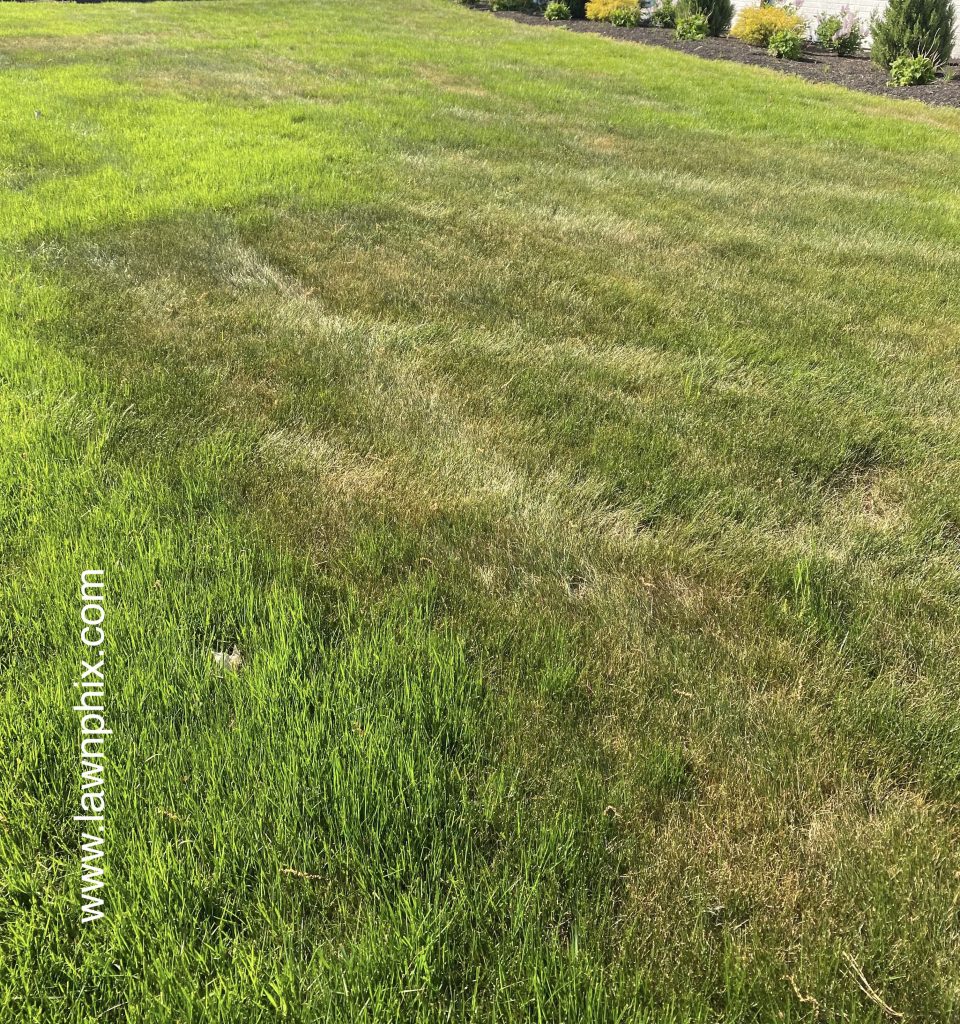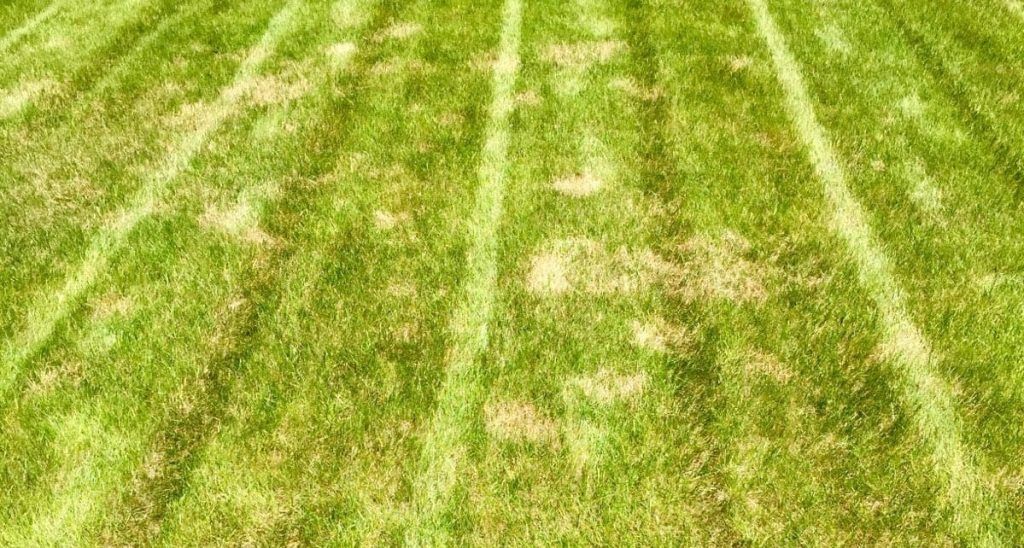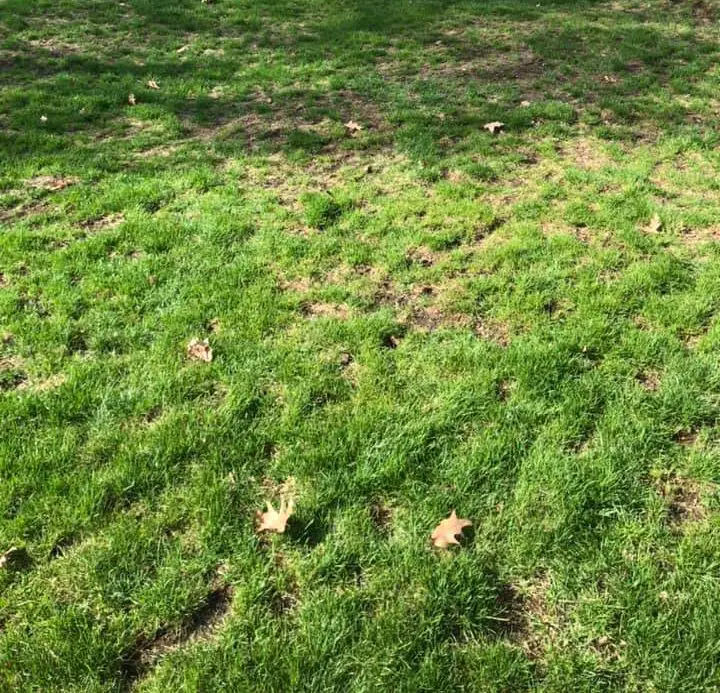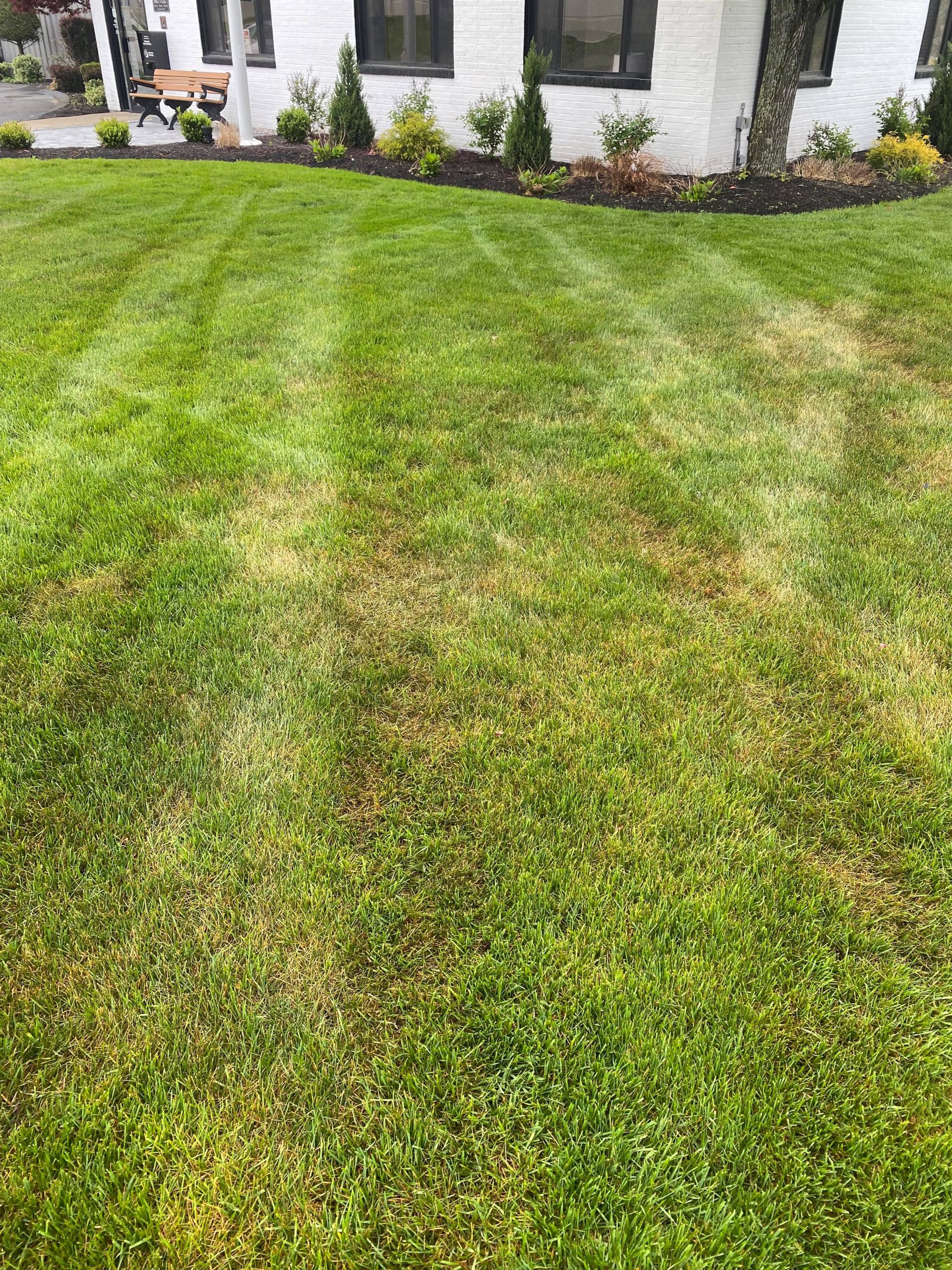A healthy green lawn is a pleasure to behold. Unfortunately, most lawns experience problems like brown patches from time to time. Patches of brown grass are not uncommon, but they’re definitely not something you want to see erupt across your lawn. If your grass is turning brown in areas during the summer, you might find it challenging to determine why. That’s because there are many reasons for brown patches to occur, especially during the heat of the summer months. Here, we’ll explore why your grass sod may be suffering from brown spots and what you can do about them.
Brown Grass, Dead Grass, and Brown Patches of Lawn
Brown spots on your lawn can be unsightly. It’s only natural that you want to know what’s causing your grass blades to turn brown. After all, brown spots on grass can be caused by a number of reasons, including poor soil quality, lawn disease, over-fertilization, lawn pests like chinch bugs, and even summer lawn stress like hot weather and drought conditions. Brown spots can also indicate areas of dead grass or dying grass. If your healthy lawn is turning brown in areas, you need to find out why so you can apply the proper fix.
Lack of Water: Drought Stress or Heat Stress
Brown spots on your lawn can be a sign of drought damage. Depending on the extent of the damage, drought conditions can cause your grass to turn brown and even result in areas of dead grass. If your grass roots are shallow, they are more likely to be impacted during periods of high heat and little rainfall. Grass with a more extensive root system tends to fare better during longer periods of drought. You may even notice that brown spots turn green when it finally rains again.
If your turf grass begins to turn brown in areas, check the sprinkler heads of your irrigation system to ensure they’re working. For instance, during the high heat of late summer, be sure to water your grass deeply in the early morning. Avoid over-watering if your grass is turning brown, but ensure your grass is watered regularly during periods of drought. Also, don’t water in the evening or your grass could be more vulnerable to fungal diseases.

Shallow Roots
If your grass has shallow roots, it’s more vulnerable to turning brown during the hot season. If there is concrete or rocks under the surface of your lawn, it could be preventing your grass from developing an extensive root system with deep roots. Underground rocks could cause patches of your grass to turn brown in affected areas. In these cases, you may wish to dig up the debris, perform lawn aeration to prevent compacted soil, and add about six inches of topsoil before planting grass seeds or installing sod.
Dead Lawn Debris
Dead lawn debris or excessive thatch can create brown spots on your lawn. Too much thatch can block sunlight and water from reaching the soil. A thin layer of thatch can be beneficial, but when thatch becomes excessive, it can lead to your lawn turning brown. To prevent your grass from turning brown, dethatch it once thatch layers get too thick.
Lawn Disease or Lawn Fungus
Healthy grass will usually resist lawn disease, but drought stress could leave it more vulnerable to lawn disease during the summer. In fact, if your grass is struggling, it may be quite susceptible to fungal diseases such as brown patch, which can cause brown spots to erupt in your lawn. If your grass has a fungal disease, you may apply a fungicide to the areas that are affected.
If grass turning brown covers extensive areas of your lawn, you might want to consult with a local lawn care service. An experienced lawn care company should be able to tell you what type of lawn disease is affecting your grass–and how to deal with it. If you don’t want to hire a lawn care service, you can apply fungicides yourself; choose the ideal product for your lawn and read the directions carefully before applying it to your grass.

Grub or Insect Damage
Grubs are notorious for eating grass roots, turning them brown as it dies. Unlike beneficial insects that can be found in grass, grubs are definitely a problem for your healthy lawn. Milky spore powder is an effective grub control measure. Your professional lawn care company may also recommend other problems to deal with your pest problem. Once you get rid of the pests, you can try to repair bare patches or brown spots. You may need to remove dead patches of grass and add grass seed to the areas or plant new sod.

Grass Turning Brown: FAQs
How do you fix browning grass?
Dormant grass can turn brown, but when the grass dies, it also turns brown. If your grass roots are still alive, you may be able to get your grass to turn green again once you treat the underlying cause of it turning brown. Prevent turf diseases by applying pre-emergent herbicides to kill weeds and maintain a healthy lawn.
Does brown grass mean dead grass?
Brown grass doesn’t always mean that the grass is dead. Although grass turning brown could indicate it’s dying, the grass could be saved with the proper fix. For instance, if it’s turning brown because of heat stress, be sure to give it sufficient water. After watering, it may turn green again.
Can brown grass become green again?
Grass turning brown may become green again if you can fix the problem that’s causing it to experience brown spots. Good lawn care such as proper watering, adequate fertilization, sharp mower blades, and soil aeration can help you green up your grass. Prevent your lawn from turning brown by watching for signs of pests and lawn diseases.
How can I make my brown grass green fast?
Provide proper lawn care such as regular mowing and sufficient water delivery. Eradicate pests like grubs or lawn diseases if that’s behind your grass turning brown. Be sure your soil is at the proper pH for your lawn type and amend it if necessary.

